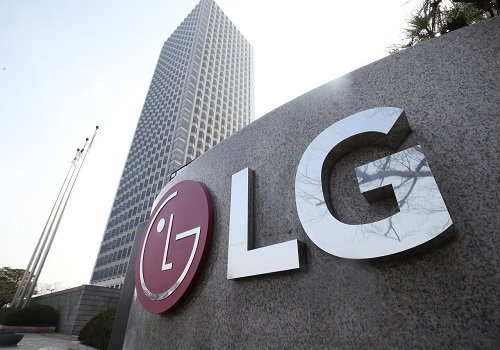Cotton Candy trading range for the day is 57120-57920 - Kedia Advisory

Follow us Now on Telegram ! Get daily 10 - 12 important updates on Business, Finance and Investment. Join our Telegram Channel
Gold
Gold prices exhibited resilience in yesterday's trading session, edging up by 0.41% to settle at 62574 amidst evolving market dynamics, particularly pertaining to US Federal Reserve interest rate expectations. The diminishing likelihood of an early rate cut in March and May was underscored by positive data emanating from the US services sector, which showcased robust growth alongside a surge in new orders, signaling a promising start for the American economy in 2024. Federal Reserve Chair Jerome Powell's commitment to a cautious approach regarding interest rate adjustments resonated with market participants, as he emphasized his stance against an imminent rate cut in March. China's increase in gold reserves, reaching 72.19 million fine troy ounces by January's end, reflects ongoing diversification strategies in reserve management. Despite the rise in reserves, the value remained unchanged at $148.23 billion, highlighting gold's enduring role as a store of value amid economic uncertainty. Technically, the gold market witnessed short-covering activity, evidenced by unchanged open interest despite a notable price increase of 258 rupees. Support levels are identified at 62325, with potential downside testing at 62070, while resistance is anticipated at 62730, possibly leading to a push towards 62880 upon breaking above. These technical indicators, combined with macroeconomic factors, suggest a nuanced market sentiment characterized by cautious optimism amidst evolving monetary policy dynamics and economic data.
Trading Ideas:
* Gold trading range for the day is 62220-62880.
* Gold steadied as likelihood of Fed interest rate cut in March and May decreased.
* Fed Powell stated that Fed will be cautious when it comes to cutting interest rates and does not expect a cut in March.
* China's gold reserves increased to 72.19 million fine troy ounces by the end of January
Silver
Silver prices experienced a modest uptick of 0.16% yesterday, settling at 70594, buoyed by diminishing optimism surrounding imminent Fed rate cuts. This shift in sentiment followed remarks by Federal Reserve Chairman Powell and other policymakers, indicating a gradual approach to monetary easing with unlikely actions in March. Minneapolis Fed President Neel Kashkari suggested a potential for two to three rate cuts this year, contingent upon evolving economic indicators, particularly inflation data. However, he maintained a cautious stance, leaving room for reassessment as new information emerges. A report from the Federal Reserve Bank of New York highlighted minimal supply chain pressures at the onset of the year, indicating resilience despite geopolitical tensions in the Middle East. Meanwhile, the Silver Institute forecasts robust silver demand in 2024, projecting a surge to 1.2 billion ounces, the second-highest on record. Notably, global demand is anticipated to increase by 9%, driven by a 6% rise in jewelry demand, particularly from India and the US. From a technical perspective, the market witnessed short covering, with open interest remaining unchanged at 32334, while prices saw a rise of 114 rupees. Support levels for silver are identified at 70355, with further downside potential towards 70115. On the upside, resistance is likely at 70780, and a breakthrough could pave the way for testing the 70965 level. This technical analysis suggests a cautiously optimistic outlook for silver, with potential price movements contingent upon market sentiment and economic developments.
Trading Ideas:
* Silver trading range for the day is 69845-70785.
* Silver dropped as optimism around Fed rate reductions faded
* Fed's Kashkari says he currently sees 2 to 3 rate cuts this year
* Fed's Goolsbey wants to see more positive inflation data before deciding on interest rates.
Crude Oil
Crude oil prices showed marginal gains yesterday, settling up by 0.05% at 6084, primarily driven by a tempered outlook on US production growth. Concerns about oversupply in the market were alleviated as the US EIA revised down its forecast for domestic oil production growth in 2024 by 120,000 barrels per day (bpd) to 170,000 bpd. This reduction in expected output growth contrasts sharply with the previous year's substantial increase of 1.02 million bpd. The EIA now projects US crude oil production to reach 13.21 million barrels per day (bpd) in 2024, significantly lower than its earlier estimate of a 290,000 bpd rise. Looking ahead, production is anticipated to rebound, with an expected increase of 390,000 bpd to 13.49 million bpd by 2025, setting a new record high. However, global oil inventories have seen notable increases, averaging 800,000 bpd from October 2023 through January 2024, attributed to factors such as the Red Sea attacks. Throughout 2023, inventories rose by an average of 700,000 bpd, according to the EIA. From a technical perspective, the market is witnessing short-covering, with open interest remaining unchanged at 11296 despite a minor increase of 3 rupees in prices. Support for crude oil is observed at 6028, with a potential downside towards 5971 levels. Conversely, resistance is likely at 6139, with a breakout possibly testing 6193. These technical levels suggest a cautious sentiment prevailing in the market, as traders navigate uncertainties surrounding production levels, geopolitical events, and global demand dynamics.
Trading Ideas:
* Crudeoil trading range for the day is 6053-6199.
* Crude oil rose as U.S. production this year is expected to grow less than expected
* U.S. EIA cut its forecast for domestic oil growth in 2024 by 120,000 bpd to 170,000 bpd
* U.S. crude stocks rose while gasoline and distillate inventories fell
Natural gas
Natural gas prices experienced a decline of -1.73% yesterday, settling at 170.2, driven by a combination of factors including increasing output and lower-than-expected demand forecasts for the week. Output has been gradually rising as gas wells recover from the freeze experienced during mid-January's extreme cold weather. Additionally, reduced flow to LNG export plants, primarily due to ongoing unit outages at facilities such as Freeport LNG in Texas, contributed to the decline in prices. Looking at the broader picture, the U.S. EIA projects record-high natural gas production and demand for 2024. Dry gas production is expected to reach 104.37 billion cubic feet per day (bcfd) in 2024 and further increase to 106.46 bcfd in 2025, surpassing the record set in 2023. Although the EIA's projections for 2024 supply were slightly lower than January forecasts, they remain higher than anticipated demand levels. Moreover, average U.S. LNG exports are expected to continue increasing, reaching 12.09 bcfd in 2024 and 14.43 bcfd in 2025, surpassing the record set in 2023 at 11.83 bcfd. From a technical standpoint, the market is witnessing long liquidation, with open interest remaining unchanged at 69889 despite a decrease of -3 rupees in prices. Support for natural gas is identified at 167.3, with a potential downside to 164.4 levels. Conversely, resistance is anticipated at 174.4, with a possible breakout leading to a test of 178.6.
Trading Ideas:
* Naturalgas trading range for the day is 160.4-173.4.
* Natural gas dropped due to increased output and lower demand forecasts.
* Gas wells are returning to service after freezing during extreme cold in mid-January.
*LNG feedgas remains low due to an ongoing unit outage at Freeport LNG's export plant in Texas.
Copper
Copper prices saw a modest uptick of 0.18% yesterday, settling at 717.25, amidst a backdrop of mixed factors influencing market sentiment. The strength of the US dollar and subdued industrial sentiment in China, a leading consumer of copper, exerted downward pressure on prices. The dollar gained ground following robust labor data in the US and hawkish comments from Federal Reserve Chair Powell, impacting the purchasing power of key importers and elevating benchmark borrowing costs crucial to industrial activities. Official manufacturing PMI data revealed a fourth consecutive contraction in the sector in January, signaling ongoing weakness. Concurrently, inventories in major Chinese warehouses surged by over 120% year-to-date, reaching nearly 70,000 tonnes, further reflecting subdued demand. However, there were some positive signals in China's manufacturing sector, with the Caixin China General Manufacturing PMI unexpectedly holding steady at 50.8 in January, matching December's figure and surpassing market expectations. From a technical standpoint, the market exhibited signs of short covering, with open interest remaining unchanged at 5278 despite a slight uptick of 1.3 rupees in prices. Support for copper is identified at 715.8, with a potential downside to 714.2 levels, while resistance is likely at 718.8, with a breakout potentially testing 720.2. These technical levels highlight the cautious trading environment amid the complex interplay of supply, demand, and macroeconomic factors influencing copper prices.
Trading Ideas:
* Copper trading range for the day is 705.9-720.1.
* Copper dropped due to strength in the dollar and pessimistic industrial sentiment in China.
* Yangshan copper premium declined as factories refrained from purchasing the metal
* Strong labor data in the US and hawkish remarks from Fed Powell lifted the dollar.
Zinc
Zinc prices edged up by 0.25% yesterday, settling at 217.55, amid concerns over an economic slowdown in China, the world's largest consumer of the metal, ahead of an extended public holiday. The market was further impacted by delays in zinc concentrate production at Russia's Ozernoye mine, attributed to Western sanctions and a plant fire, leading to a postponement until at least the third quarter of 2024. Despite potential production cuts, sustained price rallies are unlikely until there is a substantial uptick in zinc demand and the market shifts its focus away from projected surpluses of the metal, commonly used in steel galvanization. Global zinc supplies for the year are estimated at around 14 million tons, further indicating a surplus in the market. This sentiment is reflected in the lack of concern about zinc supplies on the London Metal Exchange (LME), with the cash-to-three-month zinc contract discount prevailing for most of the last nine months. From a technical perspective, the market is experiencing short covering, with open interest remaining unchanged at 4381 despite a slight uptick of 0.55 rupees in prices. Support for zinc is identified at 216.7, with a potential downside to 215.7 levels, while resistance is likely at 218.7, with a breakout possibly testing 219.7. These technical levels underscore the cautious trading environment amid uncertainties surrounding supply disruptions, demand outlook, and geopolitical factors impacting zinc prices
Trading Ideas:
* Zinc trading range for the day is 213.3-218.5.
* Zinc dropped as an economic and demand slowdown in China pressured prices.
* Chinese manufacturing PMI data showed a fourth consecutive contraction in the sector, hampering the prices.
* Caixin China General Manufacturing PMI unexpectedly showed growth in factory activity for the third straight month.
Aluminium
Aluminium closed down by -0.52% at 200.7 as traders observed a lack of fresh market-moving catalysts and subdued trading activity ahead of a long public holiday in China, a major consumer. The China Nonferrous Metals Industry Association (CNIA) reported a 30% decline in the volume of aluminium product exports from China to the European Union covered by the bloc's carbon border tariff in 2023. The EU's Carbon Border Adjustment Mechanism (CBAM) aims to prevent environmentally harmful foreign products from undermining the bloc's green transition. China's official PMI data indicated a contraction in factory activity for the fourth consecutive month, but the Caixin China General Manufacturing PMI unexpectedly showed growth at 50.8 in January 2024, beating market forecasts. This contrasted with official data, highlighting mixed signals in China's manufacturing sector ahead of the Lunar New Year celebration. Primary metal imports surged to 1.54 million metric tons globally, falling just short of the record set in 2021. However, Japan experienced a 26% decline in primary aluminium imports to 1.03 million metric tons in 2023, reflecting slow demand in the construction and manufacturing industries. Technically, the aluminium market is under long liquidation, with open interest remaining unchanged at 3647 and prices down by -1.05 rupees. Support for aluminium is at 200.1, and a breach below may lead to a test of 199.3 levels. Resistance is expected at 201.7, and a move above could see prices testing 202.5.
Trading Ideas:
* Aluminium trading range for the day is 199.3-202.5.
* Aluminium dropped as traders gauged the lack of fresh market-moving catalysts
* China's export of aluminium covered by EU carbon tax down 30% in 2023
* Japan's imports of primary aluminium fell 26% to 1.03 million metric tons in 2023
Cotton
Cotton prices, represented by Cottoncandy, closed marginally higher by 0.1% at 57560, finding support after the USDA's weekly sales report revealed robust demand for the 2023/2024 season. Net sales totaled 349,400 running bales, a substantial 69% increase from the previous week and 37% higher than the four-week average. The surge in demand was notably led by China and Vietnam, contributing to a marketing-year peak in exports at 396,700 bales. Despite the positive demand scenario, the USDA's World Agricultural Supply and Demand Estimates (WASDE) report for January projected a global production increase of 260,000 bales compared to December. This growth is attributed to larger crops from China and Argentina. The Cotton Association of India (CAI) maintained its estimates for the domestic consumption of cotton for the 2023-24 season at 311 lakh bales, with pressing estimates at 294.10 lakh bales. CAI's observations are based on inputs from members in 11 cotton-growing state associations and other trade sources. Notably, there are reports of a decline in pink bollworm infestation in the cotton crop in India, reducing from 30.62% during 2017-18 to 10.80% in 2022-23. Pink bollworm infestation has been observed in cotton-growing areas across the country. In the international market, Brazilian cotton shipments increased by 12% to reach 253.71 thousand tons in November compared to October 2023, but showed a 5.5% decrease compared to November 2022. In the major spot market of Rajkot, cotton prices ended at 26728.45 Rupees, gaining 0.17%. Technically, the market is under fresh buying, with a 5.44% increase in open interest to settle at 349. Cottoncandy is currently supported at 57340, with a potential test of 57120 on a breach below. Resistance is expected at 57740, and a move above could lead to prices testing 57920.
Trading Ideas:
* Cottoncandy trading range for the day is 57120-57920.
* Cotton gains after USDA weekly sales report a 69% increase in exports from previous week
* Global production increase of 260,000 bales compared to December - USDA
* CAI estimates domestic consumption for the 2023-24 season to remain flat at 311 lakh bales.
* In Rajkot, a major spot market, the price ended at 26728.45 Rupees gained by 0.17 percent.
Turmeric
Turmeric prices saw a modest increase of 0.67%, settling at 15636, supported by reduced supplies in the spot market. Delayed harvesting of the new crop and tighter ending stocks contributed to the positive sentiment surrounding turmeric in the near term. While export has slowed down in recent months, expectations are high for an increase in export activity ahead of upcoming festivals. However, upside potential seems limited as buying activities have slowed down in anticipation of stock releases ahead of the commencement of new crops. Additionally, pressure on prices is observed amid improved crop conditions due to favorable weather. The decision to establish PM Modi's Turmeric Board in Telangana has sparked concerns among farmers in Maharashtra regarding the location of its headquarters, reflecting potential shifts in regional dynamics and priorities among turmeric producers. Despite the optimistic outlook for turmeric, exports in November 2023 witnessed a significant decrease of 15.34% compared to October 2023 and a notable drop of 30.78% compared to November 2022. In the major spot market of Nizamabad, turmeric prices ended at 13943.05 Rupees, gaining 0.81%. From a technical perspective, the market is experiencing fresh buying, with a 0.45% increase in open interest to settle at 13495. Turmeric is currently supported at 15370, with potential testing of 15102 on a breach below. Resistance is anticipated at 15818, and a move above could lead to prices testing 15998.
Trading Ideas:
* Turmeric trading range for the day is 15102-15998.
* Turmeric prices gained supported by reduced supplies.
* Delayed harvesting of new crop and tighter ending stocks is likely to keep market sentiments up
* Export has been slow down in recent months and expected to increase in wake of series of festivals ahead.
* In Nizamabad, a major spot market, the price ended at 13943.05 Rupees gained by 0.81 percent.
Jeera
Jeera prices surged by 1.45% to settle at 27570, driven by short covering after a previous drop attributed to higher production prospects in key states like Gujarat and Rajasthan. The current rabi season witnesses a four-year high in Jeera acreage, with farmers responding to record prices from the last marketing season by expanding cultivation. In Gujarat, Jeera cultivation covers 5.60 lakh hectares, a substantial 160% increase from the previous year, surpassing the normal acreage of 3.5 lakh hectares. Rajasthan also experienced a 25% increase in Jeera cultivation, reaching 6.90 lakh hectares. Despite the positive domestic scenario, global demand for Indian Jeera has decreased as buyers prefer other origins like Syria and Turkey due to higher prices in India. Challenges such as lower water availability, fewer cold days, and concerns about fusarium wilt and pest attacks pose potential threats to the crop. While India expects a potentially bumper crop, other major producing countries anticipate higher yields, impacting the global market. In November 2023 witnessed a rise of 30.04% compared to October 2023 but a drop of 22.89% compared to November 2022. Jeera imports during Apr-Nov 2023 plummeted by 1,134.63% to 16,330.89 tonnes, with November 2023 showing a sharp decline of 81.18% from October 2023 but a substantial rise of 1,426.38% from November 2022. In the major spot market of Unjha, Jeera prices ended at 32354.45 Rupees, gaining 0.05%. Technically, the market witnessed fresh buying with a 7.26% increase in open interest, settling at 2259. Jeera is currently supported at 27180, with a potential test of 26770 on a breach below. Resistance is expected at 27840, and a move above could lead to prices testing 28090.
Trading Ideas:
* Jeera trading range for the day is 26770-28090.
* Jeera gained on short covering after prices dropped due to higher production prospects
* In Gujarat, Cumin sowing witnessed very strong growth by nearly 103% with 530,030.00 hectares against sown area of 2022
* Stockists are showing interest in buying on recent downfall in prices triggering short covering.
* In Unjha, a major spot market, the price ended at 32354.45 Rupees gained by 0.05 percent.
Views express by all participants are for information & academic purpose only.












 320-x-100_uti_gold.jpg" alt="Advertisement">
320-x-100_uti_gold.jpg" alt="Advertisement">










